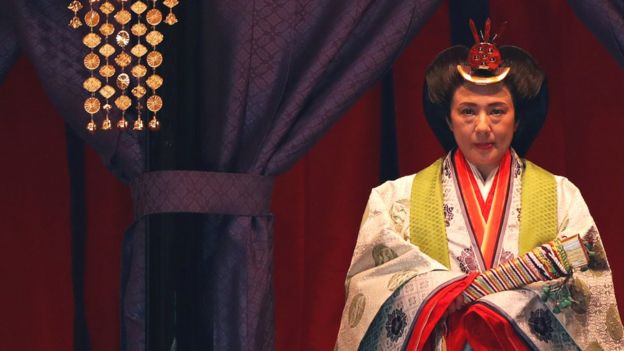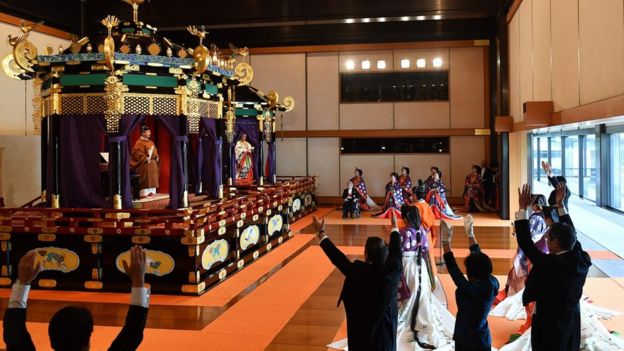Japan’s Emperor Naruhito has formally proclaimed his ascension to the throne in an elaborate ceremony.
The emperor, 59, officially began his reign in May after the abdication of his father, the then-Emperor Akihito.
But, in a series of traditional rituals, his ascension has only now been formalised.
The ceremony comes as Japan reels from the effects of Typhoon Hagibis, which left almost 80 people dead.
A celebration parade was postponed out of respect for the victims and their families.
What happened at the ceremony?
The Sokui no Rei – or the Ceremony of Accession – saw Emperor Naruhito move inside the 6.5m-high Takamikura throne.
He read out a formal proclamation, dressed in a yellow-orange robe worn only by emperors on special occasions.
“I swear that I will act according to the constitution and fulfil my responsibility as the symbol of the state and of the unity of the people,” he said, according to a Reuters translation.

His wife Empress Masako, reportedly clothed in 12 layers of robes, ascended a separate smaller throne.

Prime Minister Shinzo Abe delivered a congratulatory address, followed by shouts of “Banzai!” – translated as “long live the emperor”.

The ceremony, conducted largely in silence, was held in the presence of an ancient sword and jewel – sacred treasures that act as symbols of imperial power.
Hundreds of foreign dignitaries, including the UK’s Prince Charles, were in attendance.
The emperor will later host a tea party for foreign royalty, while Mr Abe will host a banquet in the evening.



